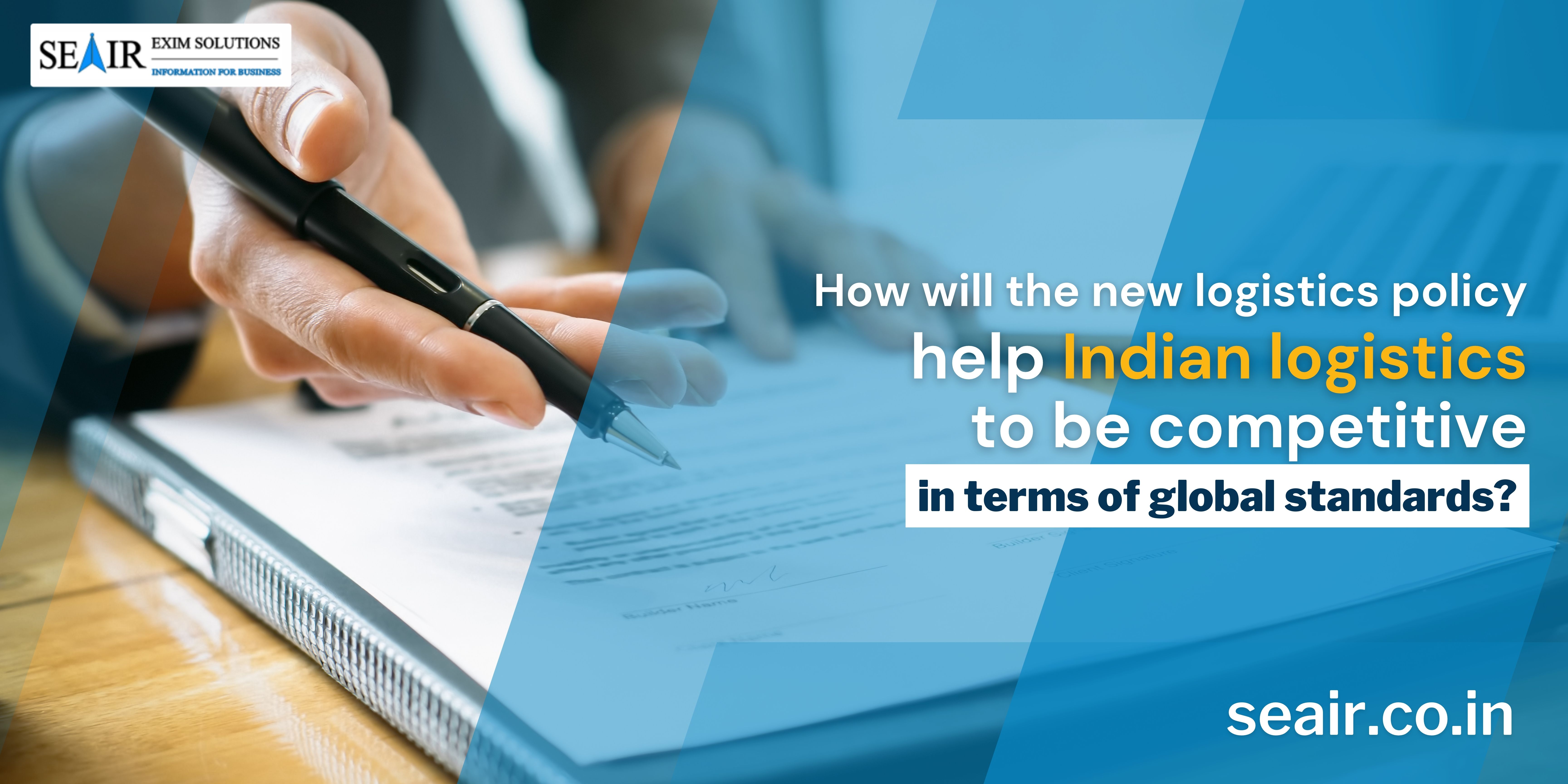
The National Logistics policy is a comprehensive attempt to manage cost and inefficiency by establishing a broad, multi-jurisdictional, cross-sectoral framework for the evolving logistics ecosystem. This initiative aims to boost the logistics sector's productivity and cut expenses. The plan intends to increase employment possibilities, the economy, and the competitiveness of Indian goods on the international market.
The logistics policy also pledges to reduce the nation's logistics costs from their current level of over 14% of GDP to less than 10% by 2022 alone, and then to single digits in the following years, giving Indian businesses a distinct cost advantage. The goal of the policy is to lower logistics costs in India so that they are equivalent to international benchmarks by 2030 and to develop data-driven decision support systems for an effective logistics ecosystem.
The National Logistics Policy's overarching goal is to promote an ecosystem for fast and equitable growth that is technologically enabled, integrated, affordable, resilient, sustainable, and reliable. By facilitating the transportation of commodities around the nation, it seeks to increase the competitiveness of Indian goods in domestic and export markets.
In comparison to the usual 8–10% cost incurred by most industrialised nations, India's logistics expenditures today represent 13–14% of GDP. The logistics cost is advanced by the high indirect expenses brought on by erratic supply chains and subpar first and last mile connectivity. Currently, the industry is likewise very disorganised and fragmented.
According to the World Bank's Logistics Performance Index, which rates nations according to their logistics performance, India was placed 44th in the world in 2018.
The policy has four major deliverables to be reached through the Comprehensive Logistics Action Plan (CLAP). They are:
Digital system integration (IDS): The IDS will include 30 separate systems from seven different departments, integrating information from the departments of road transportation, railroads, customs, aviation, and commerce.
Unified Logistics Interface Platform (ULIP): This platform unifies all digital services pertaining to transportation onto a single web interface.
Ease of logistics (e-log): The industry department is developing e-log as a digital dashboard for registering, organising, and keeping track of time-sensitive issue resolution. Timelines and the progress of the resolution will be considered. Industry associations are welcome to address their issues directly with the government.
From a development perspective, the logistics industry has enormous potential because it is essential to every industry, including pharmaceuticals, agriculture, transportation, e-commerce, medicine, and manufacturing. It is the foundation of the Indian economy, yet it only generates 14.4% of GDP and costs 13% to 14% of GDP, compared to the global average of 8%. Nevertheless, India will be able to rank among the top 25 nations in the world for logistics performance with the new regulatory framework.
The change of the Indian logistics industry has been greatly aided by the government's adoption of contemporary technology and the introduction of programmes like Make in India, the GST system, and the PM Gati Shakti programme. It has driven India's ambition to one day lead the world in manufacturing and produced smooth digital transactions, better access to global markets, increased system transparency, integrated logistics systems, etc. Government programmes like Sagarmala and Bharatmala have accelerated the construction of Dedicated Freight Corridors to improve logistical links for planned infrastructure expansion.
So, a systematic logistic ecosystem driven by all these initiatives by the government will lead India to compete at the global level and assist the market reach the estimated USD 380 Bn mark by 2025 with a CAGR of 10-12 percent. Seair Exim Solutions is a best service provider of india import export. It provides up-to-date, trustworthy, and accurate Global Import Export Trade Data and Trade Data for several countries, including Kenya, Mexico, Pakistan, Kenya, the United States, and Russia. Seair Exim Solutions can be your most accurate service provider if you're looking for reliable custom data. Send an email to info@seair.co.in right away to gain import-export data.
We have successfully served many reputable clients for Import-Export Data Information Services. Here are some of our clients:
Copyright © 2009 - 2024 www.seair.co.in. All Rights Reserved.
Leave a Comment